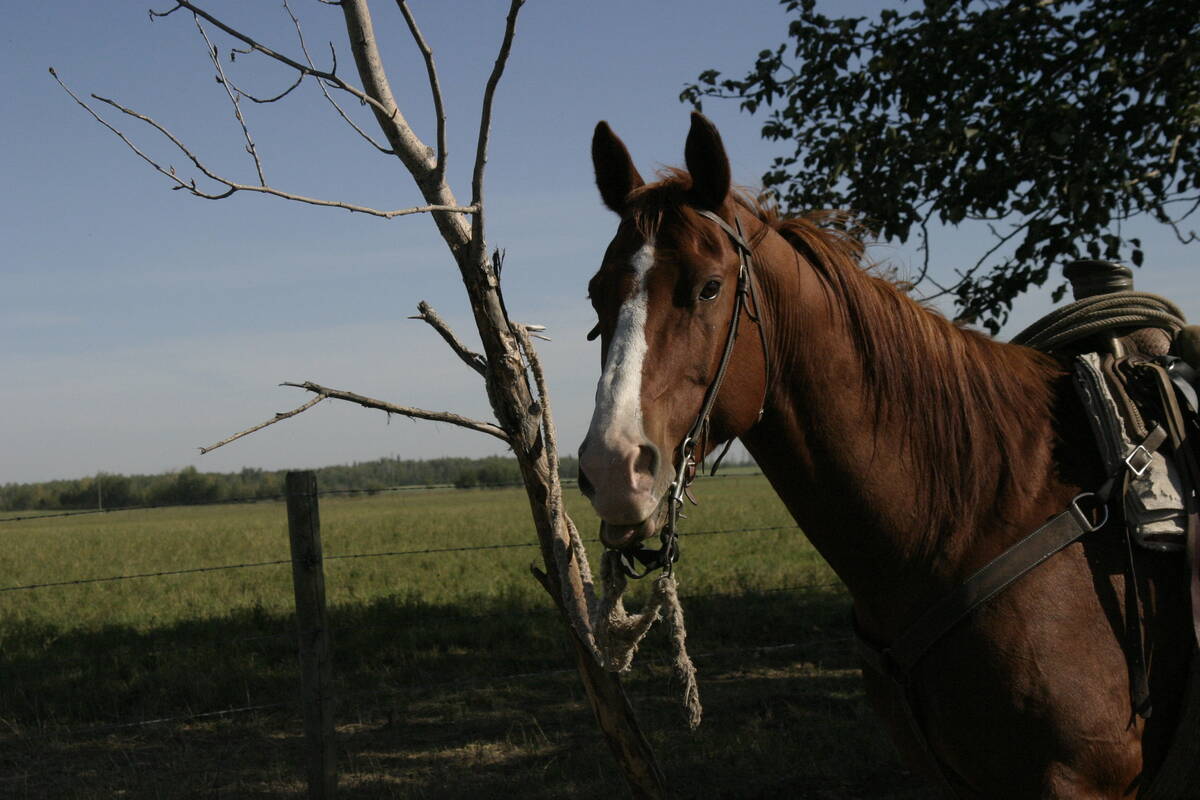OLDS, Alta. – Ultrasound turned Grant Hirsche’s $20,000 bull calf into a $270,000 bull calf.
Without the ultrasound information that showed the calf had excellent marbling and a large ribeye, Hirsche knows five American buyers wouldn’t have paid the big money for his Hereford calf last November.
“I needed to have the data,” Hirsche told a Tools for Building Better Cows conference.
Ultrasound is one marketing tool he uses to promote his purebred cattle. It’s also a particularly important one, now that more slaughter plants pay premiums for fat cattle with good marbling or intramuscular fat throughout the meat and a large ribeye.
Read Also

Horses challenged when asked to be weekend warriors
Horses are creatures of consistency. Their bodies and nervous systems are designed for steady, rhythmic movement, low-intensity grazing and regular social interaction.
“We’re trying to get a premium price for our product and that’s one way to do that,” said Hirsche, who ultrasounds all his bulls before his annual fall sale.
Ultrasound is the only way to know carcass information while the animal is still alive, said Rod Wendorff of Windy Ridge Ultrasound, who is hired by several feedlots to ultrasound animals before they are sent to slaughter.
Depending on the data, cattle are directed to different slaughter plants. Well marbled animals are sent to plants that pay premiums for marbled meat. The leaner animals are sent to plants that pay premiums for lean meat.
“We identify those that will meet the grid,” said Wendorff, who takes ultrasound measurements in the same location used by slaughter plant graders.
Bart Holowath, general manager of cattle operations for Western Feedlots, said his company has more than 750,000 carcass data records on its computers and uses the data when deciding whether to accept or reject cattle into its feedlot.
“We have people we don’t buy cattle from anymore based on the data,” said Holowath, who believes feedlots have only a limited amount of influence on the final carcass characteristics.
Holowath showed carcass information from two animals that were slaughtered the same week. One brought a 74 cent premium and the other a $91 premium.
“That is the real world difference,” he said, adding that ultrasound is a good way for producers to find the premium cattle.
Hirsche said a new buyer recently called him from British Columbia looking for a bull because he knew ultrasound data would be available.
“I can guarantee ultrasound data is more accurate than me looking at the animal.”














